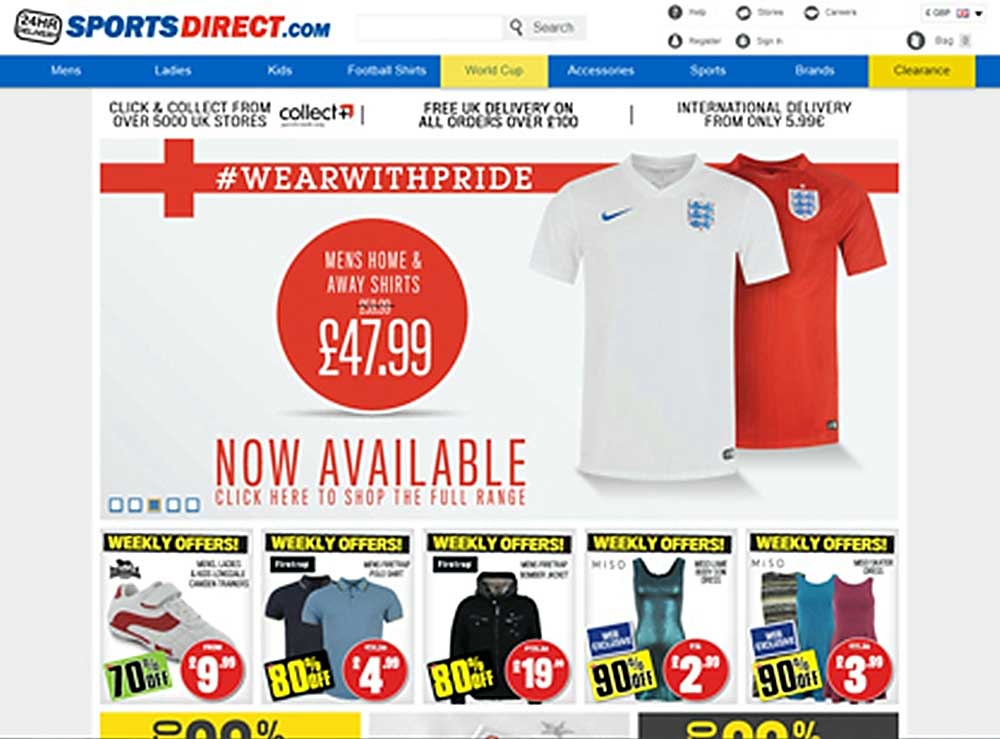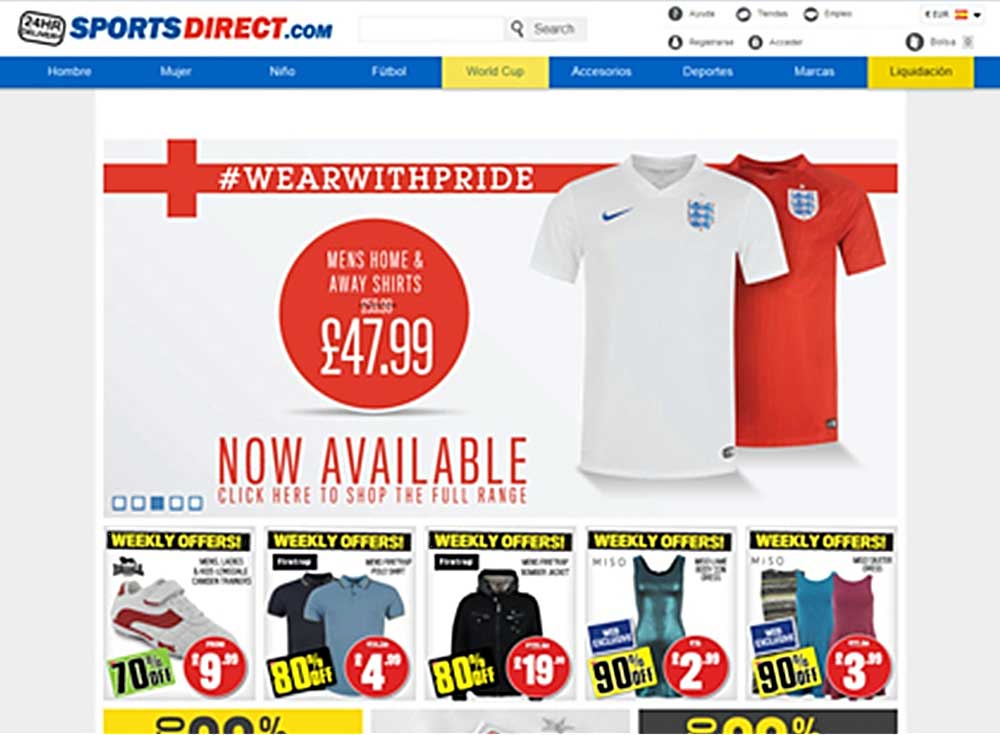Few e-commerce companies launch with the intention of growing a multinational retail business. However, when their website begins to receive inquiries and sales from abroad, many companies start considering the opportunities available for online export.
Recently, we at Smoke & Croak published an interactive infographic on search engine optimization for an international website. It's a step-by-step guide on how to conduct SEO to grow visibility on international search engines. And although it provides useful insight from sources around the Web on how to promote your business to international browsers, it doesn't go beyond promotion.
If you've spent valuable resources in gaining visibility on international search engines, you should also spend time considering how to optimize the conversion rate on your site for the new audience.
Many view localization as an end-of-project task, purely intended to allow the new audience to browse the site in their own language. That misconception would have a detrimental effect on the conversion rate optimization (CRO) of your international website. Though localization includes elements of translation, when done well it can serve to reduce barriers in the buying process and convert visitors into customers.
I'm a firm believer that the "marginal gains" philosophy behind the recent success of the British cycling team can be applied to most business scenarios. With localization or CRO, we're not looking for one major website element that can make or break your transaction model. We're looking for marginal gains across all the sections of the website—no matter how seemingly insignificant—that will remove a possible barrier from purchase.
On their own, those marginal gains don't look like much, but as you begin to put them together you create a successful international online sale model with a healthy conversion rate.
Here are seven elements of localization ghag can have an impact on your international business objectives.
1. Localizing Currency
Localizing currency seems like an obvious task for an international e-commerce site. Users want to see the price in their currency, and the majority of e-commerce sites provide this for their customers.
However, consider a finer detail: How would you display currency? If your business is looking to sell into the EU zone, do you display prices as €1 or EUR 1? Does it matter? Some e-commerce consumers are used to seeing the € symbol, others the EUR label. Picking the right one for your market contributes to a marginal win.
You want to display the currency the way that consumers are used to seeing it so that they feel comfortable browsing the site and making a potential purchase.
Run the research and find out how currency is displayed by competitors in your international market.
2. Setting Prices
Pricing is crucial. Are you going to simply apply an exchange rate to prices from your domestic market? A better method is to research the target marketplace and discover what the competition is charging. You may have to reduce rates to keep competitive. Alternatively, you may be able to increase rates if the market price is higher abroad than at home.
You also need to decide whether you're going to set international prices with an annual price list. That could be risky, because exchange rates fluctuate and you could lose margins as a consequence. A better option would be to use an exchange rate API like Open Exchange Rates or Exchange Rate API. Those tools display pricing in various currencies and track exchange rate fluctuations every hour.
As the exchange rate changes, the API reflects the change in the displayed price of your product, ensuring that your margin and price is fixed in line with the price that you want to charge in the base currency.
3. Payment Methods
You run an e-commerce site in the US or UK and customers have the option of paying with credit and debit cards. Do you offer the same payment methods for international markets? You need to run some research and understand whether customers in your target international market are happy to pay with a credit card. Maybe they prefer another method.
For example, German e-commerce customers are used to paying by bank transfer or cash on delivery. Can you accommodate either option? If not, you're adding a barrier to purchase.
4. Localizing Delivery and Returns Policies
Are you going to charge for delivery? If so, how much? Make all delivery-related information completely clear and easy to find for the customer.
You need a specific delivery policy for each market. Research that market and understand more about consumer expectations. Do they expect free delivery and is anything less a major stumbling block? Is it worth increasing prices or minimum order values in order to accommodate free deliveries to international markets?
Second, create a returns policy for the international market. Before launching the site, you need to have a clear understanding within the business of how you'll manage returns.
You also need to research consumer protection laws, which can differ from market to market. The entire process needs to be documented and available on the website for customers.
5. Translating and Localizing Content
If the website content requires translation, it should be done by a professional translator or translation agency. A Google Translate widget won't cut it, and neither will using a friend or colleague who speaks the language. Translation is a profession and skill in its own right, not a task that anyone who speaks a couple of languages can complete competently. Poor marketing copy adds a barrier to purchase.
Editing content for new markets is not merely a matter of translation. Localized content will also be required if you're exporting to countries that speak the same language as the domestic market. If you're a US e-commerce business looking to export to the UK, create localized copy in UK English. Remember, win the small margins!
6. Localizing Products and Offers
If you're looking to do a trial of an online market before conducting full-scale localization, it can be a good idea to launch a microsite version of your e-commerce store, offering the products that you believe are best suited to that market. A small amount of online research through consumer keyword search volumes and online user feedback should give you an indication as to which products those may be.
Sometimes, your offers and sales should also be localized for the new market. Here's an example of how not to do it. Sports Direct, a UK based FTS100 retailer, conducted wide-scale localization and sells products online in several international markets (the site is available in 14 languages and 10 countries). The following screenshots show the UK and Spain site homepages.
The text in the body and menu has been translated into Spanish, but any text in the images has been left in English. Also, in the buildup to the World Cup, the site promoted the sale of the England soccer shirt. Makes sense for an English site, but wouldn't it be better to change the headline offer on the Spanish site to the Spanish national shirt?
A sales offer localized for the target audience is likely to pull a much higher conversion rate.
7. After-Sales Support
How are you going to deal with after-sales support for a new market, and potentially new language? Do you have anyone in the team capable of reading and returning emails or social media messages in the target language? What about phone calls?
For a successful launch of an international website, you need to have a plan in place to manage interactions with customers.
* * *
In e-commerce, the barriers to export are minimal. With a bit of preparation, most e-commerce businesses have the potential to become multinational retailers.






